
 Many of the children began to pour the watercolor- which is usually what toddlers want to do with a cup of liquid! Sometimes they would pour the paint into different cups, but mostly they poured it onto their paper (after the first class I realized it was a good idea to use trays!)
Many of the children began to pour the watercolor- which is usually what toddlers want to do with a cup of liquid! Sometimes they would pour the paint into different cups, but mostly they poured it onto their paper (after the first class I realized it was a good idea to use trays!) After a little while, I offered the children coffee filters to paint on in addition to their paper. Coffee filters soak up the watercolor in a different way and are fun to experiment with.
After a little while, I offered the children coffee filters to paint on in addition to their paper. Coffee filters soak up the watercolor in a different way and are fun to experiment with.




 Eye droppers are great tools to use with the liquid watercolor. They’re unique and fun for the kids, but they’re also excellent for developing fine motor skills (specifically the pincer grasp, used for writing).
Eye droppers are great tools to use with the liquid watercolor. They’re unique and fun for the kids, but they’re also excellent for developing fine motor skills (specifically the pincer grasp, used for writing). After a lot of painting and pouring, I moved the paper to dry and brought out whipped cream! With the aluminum foil on the table, I gave each child a scoop of whipped cream and encouraged them to use it in their exploration. Some kids immediately wanted to rub their hands in it, while others used tools to move it around. Painting the liquid watercolor on the whipped cream offers a unique sensory experience and a new way of seeing the vibrant colors.
After a lot of painting and pouring, I moved the paper to dry and brought out whipped cream! With the aluminum foil on the table, I gave each child a scoop of whipped cream and encouraged them to use it in their exploration. Some kids immediately wanted to rub their hands in it, while others used tools to move it around. Painting the liquid watercolor on the whipped cream offers a unique sensory experience and a new way of seeing the vibrant colors.









 The easels were set up with jars of liquid watercolors to continue the watercolor experience.
The easels were set up with jars of liquid watercolors to continue the watercolor experience.


 I recently replaced some of the containers on the shelf to entice the children to visit it more often. I think it’s working.
I recently replaced some of the containers on the shelf to entice the children to visit it more often. I think it’s working.
 Finally, I brought out the watercolor spray bottles to use on the easels and at the table. I can never go wrong with the spray bottles!
Finally, I brought out the watercolor spray bottles to use on the easels and at the table. I can never go wrong with the spray bottles!



































































































































































































































